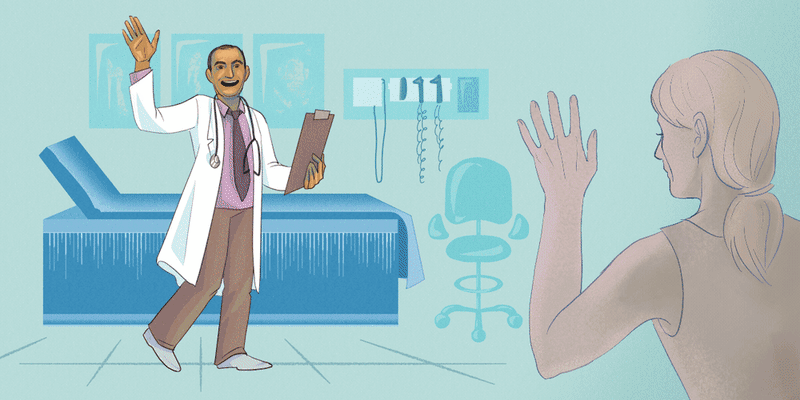In residency, moonlighting, or clinical side gig work, can be a gamechanger for those upper-level residents who have free time and are willing to spend it practicing medicine. For most residents, there is likely no extra work that will pay as well as moonlighting does for your time and expertise. On top of this, a little extra money and margin in residency can go a long way toward breathing easier financially. Beyond the financial benefit of moonlighting, there is valuable clinical experience to be gained with every patient you see. I can think of several cases and uncommon diagnoses that I was first exposed to while moonlighting and I’m certainly more proficient clinically from these experiences.
To get started moonlighting, there are some basic qualifications you will need. First, you will need to complete intern year of residency (or two years of residency if you’re an international medical graduate), pass Step 3, and obtain your state’s unrestricted medical license. Additionally, you will likely need signed permission from your program director stating that you are able to moonlight. Once you have your full medical license, not just a training license, you will be able to start looking for moonlighting gigs!
The best way to find these gigs is by word of mouth, particularly from residents who have come before you in your own program. They are the people most likely to know which opportunities are available and may even be able to suggest your name wherever they’re moonlighting to get your foot in the door. Faculty are another good resource, as departments or organizations in need may reach out to them for residents interested in side work. In my experience, most moonlighting opportunities are solely advertised by word of mouth and not necessarily posted on job sites as typical attending and locum tenens positions are. These moonlighting positions could be in many different settings, from urgent care or after-hours clinics to hospitalist work to ED care. I have primarily performed hospitalist moonlighting, as this is the setting I plan on working in after residency, but I know several colleagues who prefer urgent care or ED work. There is something out there for everyone based on your interests; it just takes a little effort to find the right position!
When looking for opportunities, one important distinction to be aware of is internal versus external moonlighting. Internal moonlighting refers to moonlighting conducted within the same health system your residency is in. There are many perks to this — although they vary by institution, a common one includes malpractice coverage for moonlighting work. You may also be able to invest in your workplace retirement accounts with money earned through moonlighting. External moonlighting, on the other hand, is done outside of your organization, which comes with its own quirks. You will need to ensure malpractice coverage is offered by the external organization, including tail coverage, and you will need to be wary of how this may affect your taxes if the income is classified as independent contractor work that does not have taxes withheld initially. A big tax bill is not the surprise you want come tax day!
Depending on the specific gig, you may have varying levels of supervision when moonlighting. In its purest form, you will truly be functioning and billing independently. In other settings, you may be functioning semi-independently but with varying degrees of indirect supervision. In any event, before taking on a position you should ensure you clearly understand your role and responsibilities. It is imperative that you are comfortable with the work you will be asked to perform; after all, this is your medical license you are practicing with, and input from more experienced physicians may not be as readily available as it is in your residency work. While this may sound daunting, don’t let it deter you. Through my own experiences, I have found that when you’re ready, this additional level of responsibility fosters your growth into the independent physician you’re working so hard to become.
Of course, limitations do exist to moonlighting. You are still subject to ACGME rules and regulations. You will need to make sure you are complying with the necessary work hour restrictions and time off requirements. This ensures not only your own well-being but also that of your patients. Additionally, you must take care of primary residency work first. Remember, at the end of the day you are a resident. Your program and the duties you agreed to when you participated in the Match process and eventually signed your contract cannot be sacrificed for side work.
All in all, moonlighting in residency is not only the best and most surefire way to boost your income, it will also push you clinically to perform at a high level for your patients in a scenario with less guardrails than residency. This certainly isn’t for everyone, and even those who enjoy taking on extra work will need to be vigilant to avoid burnout. Nonetheless, with some networking and sacrifice, you can make the most of moonlighting opportunities and increase your income at a time when most of us could certainly use it!
Interested in learning more about physician pay? Check out Doximity’s salary map, which provides estimates of how much different specialties make in various regions based on anonymous surveys.
Dr. Del Carter is a family medicine resident physician in Tallahassee, FL. He enjoys traveling, watching sports, working on cars, and spending time with friends and family. Dr. Carter is a 2024–2025 Doximity Op-Med Fellow.
Illustration by Diana Connolly







